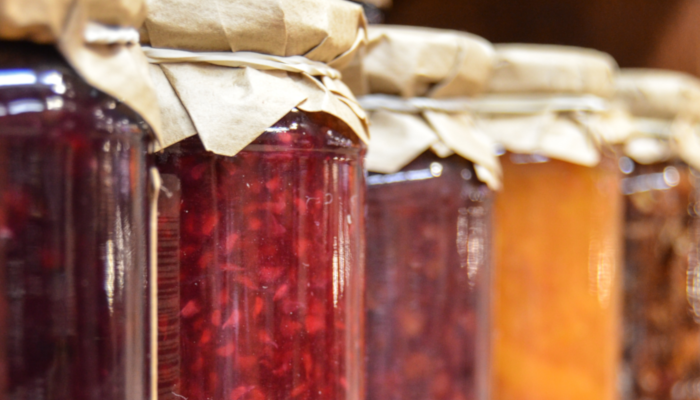Best preservation fund in South Africa?
By Lizelle Steyn
Updated 3 July 2022

Photo credit: Pixabay
A few months ago I wrote an article on whether to choose a preservation fund or retirement annuity (RA) when leaving your employer, followed by an RA comparison in the search for the best RA in South Africa. A preservation fund comparison seems like the logical next step. Currently, the number of preservation funds available for investors who prefer low-cost index trackers is smaller than that for RAs. But you do have some good options if you’re looking for the best preservation fund in South Africa.
For this comparison, I’ve included the four main preservation fund providers that:
- Allow you to transfer your money to another company with no penalty
- Have at least one low-cost passive fund – an index tracker - in their underlying fund range
- Are geared towards direct investors and can service them well
These are the results.
Preservation fund comparison
| Allan Gray | OutVest | Sygnia | 10x | |
|---|---|---|---|---|
| Platform/ admin fee (incl VAT) | 0.58% p.a. for amounts up to R1.5m and 0.23% on portion above R1.5m but less than R5m; 0.12% on portion above R5m | About 1.5% up to R330 667; thereafter fixed at R4 960 p.a. and stays fixed until the total investment is worth more than R2 480 000. You’re then only charged about 0.2% of the value of your investment. (Securities transfer tax not included.) | 0% if you choose Sygnia underlying fund; 0.46% p/a for an external fund for amounts up to R2m and 0.23% on portion above R2m | 1.035% for amounts up to R500 000; 0.92% on portion above R500 000 but less than R1m; 0.805% on portion above R1m but less than R5m; 0.575% on portion above R5m but less than R10m; 0.4025% on portion above R10m |
| Flagship high equity index fund | Nedgroup Investments Core Diversified Fund | OUTmoderate index fund | Sygnia Skeleton Balanced 70 unit trust fund | 10x High Equity Index Fund |
| Total Investment cost of above fund (incl VAT) | 0.40% p.a. | Sponsored by the all-in product fee above | 0.52% p.a. | Up to 0.115% p.a. |
| Combined platform + total fund fee (incl VAT) on above fund choice | 0.98% p.a. for amounts up to R1.5m and 0.63% on portion above R1.5m but less than R5m; 0.52% on portion above R5m | About 1.5% up to R330 667; thereafter fixed at R4 960 p.a. and stays fixed until the total investment is worth more than R2 480 000. You’re then only charged about 0.2% of the value of your investment. (Securities transfer tax not included.) | 0.52% p.a. | Up to 1.15% for amounts up to R500 000; decreased according to a sliding scale for bigger amounts |
| Size of fund range | Few passive funds but large active range (Allan Gray + several external fund managers) | Range of four OUTvest risk profiled funds | Substantial passive and active range (Sygnia + many external fund managers) | Own risk-profiled lifestage funds only |
| Service channels and quality | Latecomer to social media, but excellent service across all other channels, especially call centre. Impeccable admin | Available across traditional channels like telephone as well as digital channels. Good 'after-sales' service | A Big improvement on email responses since two years ago. Also very quick to respond on Twitter | Excellent response time and onboarding process. Available across traditional channels like telephone as well as digital channels |
Source: Allan Gray | Nedgroup investments | FundsData | Outvest | Sygnia | 10X | gofreedom.co.za | July 2022
Find the fees confusing? Ask for the effective annual cost (EAC) breakdown
If you find the fund and platform/admin fees published online confusing, do yourself a favour and contact the financial service provider of your preservation fund directly. Even the fund fact sheet – also known as minimum disclosure document – often doesn’t contain all the fees you’ll be paying. Ask for a full effective annual cost (EAC) breakdown inclusive of VAT, specifically for the amount you’re preserving and the underlying fund you’re selecting.
The quote you receive in your inbox is the one you should be able to rely on. At time of writing, for amounts below R954 000, Sygnia with the Skeleton Balanced 70 unit trust fund had the lowest fees. But for amounts above R954 000 Outvest beats its competitors on fees.
Fees aside, which balanced index fund will outperform?
If only investing was as easy as choosing the product with the lowest fee. Unfortunately, it also involves active decisions, such as which asset class indices to invest in and across which geographies. (For a refresher on asset allocation read this.) With a preservation fund, the pension fund law forces you to diversify across asset classes. You may not invest more than 75% in equity (local and global stock markets combined) and now not more than 45% globally (across all global asset classes combined). This 45% offshore limit used to be 30% until recently and you'll note in the table below that some funds have upped their global exposure; others are waiting. Although all four funds compared here compete in the same high equity fund category, they don’t invest in the same underlying indices, and they have significantly different allocations to the main asset classes and geographies.
| Nedgroup Investments Core Diversified | OutModerate Index Fund | Sygnia Skeleton Balanced 70 | 10x High Equity Index Fund | |
|---|---|---|---|---|
| How much allocated to growth assets? That's equity (stock market) + property | 75% target | 80% | 70% | 77% |
| Total offshore allocation | Total offshore has been upped to 40%. This may increase to 45% in future. | Total offshore allowed still sits at 28%. This may increase in near future. | Total offshore allowed still sits at 28%. This may increase in near future. | Total offshore has been upped to 29%. |
| Getting under the hood: asset allocation of above fund | Strategic asset allocation targets. Benchmarks itself against: 39.5% capped SWIX excl. REITs (10% cap) – local equity; 4.3% capped SA REIT Index (20% Cap) – local property; 6.8% ALBI – local nominal bonds; 4.2% CILI – local inflation-linked bonds; 5.2% SteFI Composite – local cash; 28% MSCI All Country Index – global equity; 3.2% FTSE EPRA/NAREIT Developed Index – global property; 3.7% Barclays Global Aggregate Bond Index – global nominal bonds; 3.3% Barclays Global ILB Index – global inflation-linked bonds; 1.8% Composite USD/GBP/EUR Libor – global cash |
Strategic asset allocation targets that are re-assessed every few years. Benchmarks itself against: 48% S&P SA 50 (10% cap) – local equity; 8% S&P SA Composite Property Capped – local property; 8% S&P SA Sov Bond – local nominal bonds; 3% S&P SA Sov ILB– local inflation-linked bonds; 3% S&P SA Pref Share – local preference shares (act similarly to bonds); 1.5% SteFI Composite + 0.5% SABOR – local cash; 14.3% S&P Developed BMI – global developed market equity; 7.7% S&P Emerging BMI – global emerging market equity; 2% S&P Global Property 40 – global property; 4% S&P Global Developed Sov Bond – global bonds; |
Tactical asset allocation around long-term strategic allocation targets. Benchmarks itself against: 48% SWIX – local equity; 13% ALBI – local bonds; 11% SteFI Call – local cash; 22% MSCI All Country – global equity; 4% Barclays Global Aggregate Bond – global bonds; 2% global cash |
Strategic asset allocation targets. Benchmarks itself against: 45.0% 10X Top 60 SA Share Index (capped at 6% per share) – local equity; 6% S&P SA Sovereign Bond 1+ Year Index – local nominal bonds; 8% S&P SA Sovereign Inflation-Linked Bond 1+ Year Index – local inflation-linked bonds; 7% SteFI 3-Month – local cash; 5.0% 10X SA Property Index – local property; 21.5% MSCI World Index – global developed market equity; 3.5% MSCI Emerging Markets Index – global emerging market equity; 2% FTSE EPRA/NAREIT Developed Index – global property; 2% USD/ZAR exchange rate – global cash |
| When can we expect the above fund to outperform its peers? |
When global stock markets do better than the JSE; Within its local equity allocation: When large SA companies like Naspers shares perform poorly (typical of capped Swix equity exposure) |
When growth assets perform better than bonds and cash; When the JSE does better than global stock markets; When emerging markets outperform developed markets; Within its local equity allocation: When large caps like Naspers shares perform poorly |
When the JSE does better than global stock markets; Within its local equity allocation: When large caps like Naspers shares do well; When local bonds and cash outperform local property; When local nominal bonds outperform inflation-linked bonds |
When growth assets perform better than bonds and cash; When large caps like Naspers shares perform poorly; When local inflation-linked bonds do well |
Source: Allan Gray | Nedgroup investments | FundsData | Outvest | Sygnia | 10X | gofreedom.co.za | July 2022
Because of the differences, certain funds will do better than their competitors under certain circumstances.
For example, the Sygnia Skeleton Balanced 70 unit trust fund typically has a higher exposure to Naspers than the rest and its local equity allocation can therefore be expected to do better than the rest when Naspers shoots the lights out. The opposite is also true. To manage the risk of such a large share like Naspers performing poorly, the other 3 funds have capped their exposure to any one share in their underlying local equity market indices.
Considering geographical allocation, the Nedgroup Investments Core Diversified Fund has upped its offshore exposure to 40% - the highest among the 4 funds - and should do well when offshore markets eclipse SA markets.
The Outmoderate Index Fund has the highest exposure to growth assets (equity and property combined) across geographies – 80%. Because over the very long term (20 years or more) growth assets typically outperform bonds and cash, we can expect the strongest long-term before-fees performance from this fund. But with more volatility - ups and downs in market value - along the way. For small investment amounts this fund is more expensive than the other three, though, and one would need to weigh the advantage of having more growth assets against higher expected volatility and the drawback of a higher fee if you’re preserving less than R330 667. The 10x High Equity Index Fund is not far behind the Outmoderate fund with a 77% exposure to growth assets.
The verdict: the best preservation fund in South Africa
Choosing the best preservation fund is about more than choosing the product provider and underlying fund with the lowest fees. Because a transfer to a preservation fund takes time and waiting for the money to arrive in your new account could become nerve wracking, choose a brand you trust and who will respond to your queries around the status of the transfer promptly. Fortunately, all 4 service providers discussed here have set themselves high service standards. You could pick any of them based on service.
By choosing to preserve your retirement savings, you’re already miles ahead of anyone who has decided to withdraw their savings pot and spend it. So, please don’t have sleepless nights about which one of the 4 is the best preservation fund in South Africa. I did the analysis around which fund should do better under which circumstances because I like getting ‘under the hood’ of things. But one can still be a good enough investor without this kind of analysis. Provided you have more than 7 years left to retirement, to give your fund time to grow and recover from future market corrections, any of them should do a fine job of preserving your life savings.
Related blog post

Best retirement annuity in South Africa?
Updated 2 July 2022
While searching for the best retirement annuity (RA) in South Africa, you would have heard about the new flexible type of RA. That’s the one you want. And if you’re a fan of passive investing, you’ll also be happy to hear that you now have the option to choose one of these low-cost index trackers as the underlying fund for your new RA. Now where do you go for the best retirement annuity in South Africa?

Best tax-free account (TFSA) in South Africa
2 February 2020
If there’s only one investment product in your long-term investment portfolio, surely it has to be a tax-free savings account (TFSA). Since TFSAs started in 2015 the number of TFSA providers have grown rapidly, pushing fees down (great for investors). But the levels of service you get with these products vary hugely. Where do you go for the best tax-free account in South Africa?

